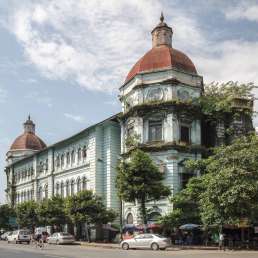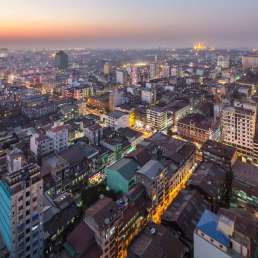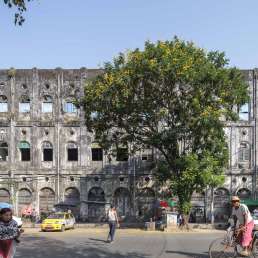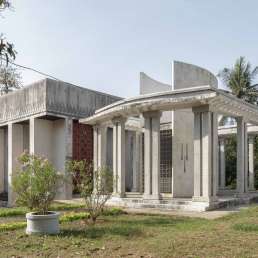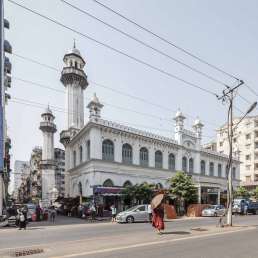Formerly: Bank of Bengal and Imperial Bank of India
Address: 15-19 Sule Pagoda Road
Year built: 1914
Architect: Unknown
This building was recently repainted in white and blue—clearly the colours of choice for the MEB’s historic branches in Yangon. The historical accuracy of the renovations are dubious, which adds to the building’s extravagance. Tall Ionic columns connect the top two floors. An imposing corner tower overlooks Strand Road. There are numerous pediment designs above the windows, some triangular, others semicircular. The same patterns also feature in the arches at the top. The main arch, above the main entrance on Sule Pagoda Road, is rounded; a corporate insignia probably adorned this space once. Balustrades line some of the windows and the edges of the roof. A closer look at the building reveals a superficial paint job: the weeds on the tower have not been cleared away, nor did painters see to the building’s side and back which are still in its previous yellow coating. Note the small annex building between the main building and the First Private Bank next door.
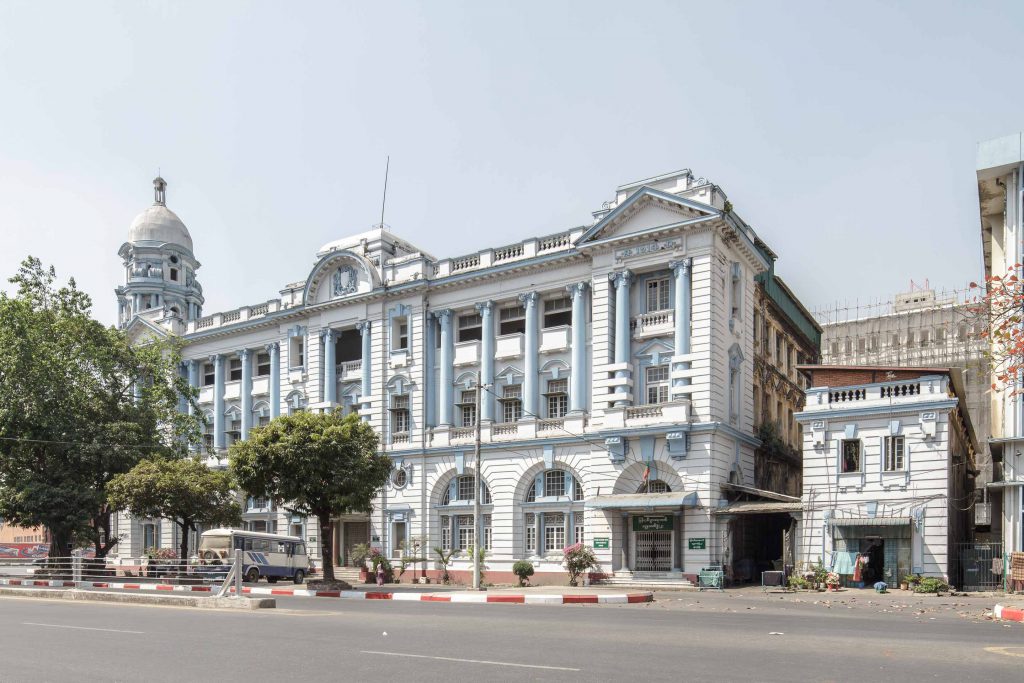
The Bank of Bengal became the Imperial Bank of India after a merger in 1921. In his fantastic book on the history of the Burmese banking sector, Fiery Dragons, Sean Turnell writes that the Imperial Bank was by far the most important bank in colonial Burma. It took on central bank-like features during much of the period before independence. For example, it provided the system for clearing cheques. It also offered commercial lending, particularly to the Chettiar community, who in turn provided funds to much of Burma’s agricultural sector. The bank was renamed the State Bank of India after independence and operated on a much smaller scale after the war. It was nationalised in 1963 and became “People’s Bank No. 8”.
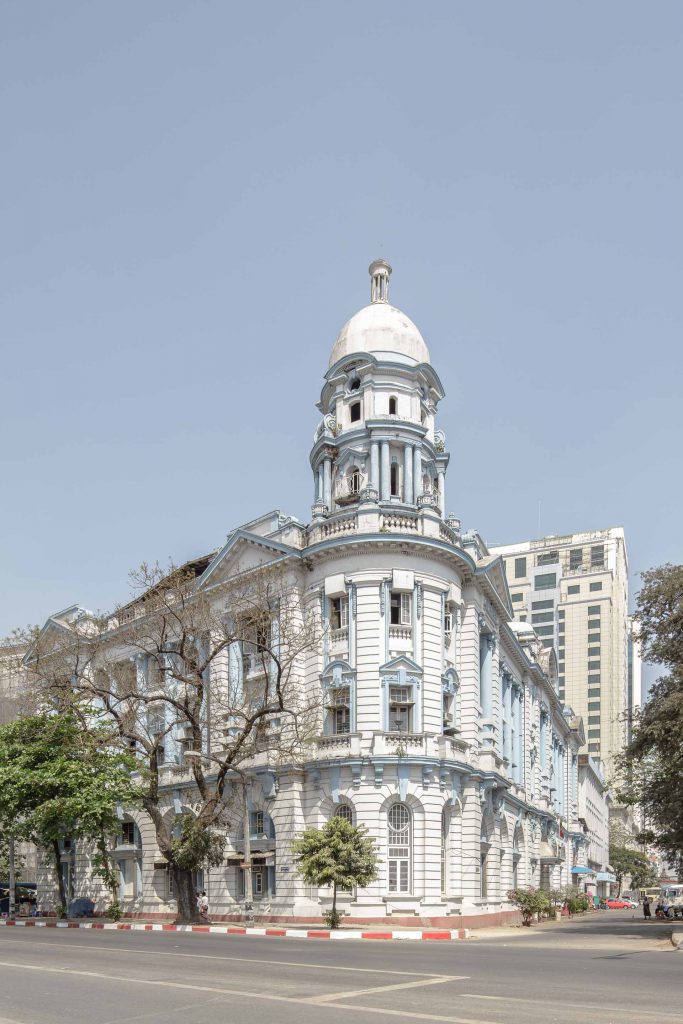
Unlike the parts of Strand Road by the General Post Office or the Strand Hotel, this is a quieter stretch. However, a major hotel construction at the Division Office Complex might change this dynamic. To make this section of the Strand more inviting, the architects should make the most of the building’s pedestrian arcade.
